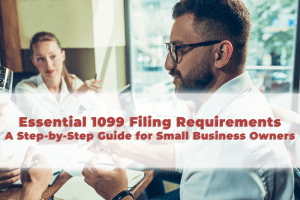What Is a Partnership for Tax Purposes?
In the eyes of the IRS, a partnership is an arrangement where two or more people come together to run a business and share profits. While partnerships don’t pay income tax like corporations, they must file an information return to report their income, deductions, gains, and losses. The income or loss is then passed through to the partners, who report it on their personal tax returns.There are several types of partnerships:
- General Partnership (GP): All partners share management responsibilities and liabilities.
- Limited Partnership (LP): Includes both general and limited partners, where general partners manage the business, and limited partners typically invest without being involved in daily operations.
- Limited Liability Partnership (LLP): Offers liability protection to all partners, unlike a general partnership.
Key Forms for Partnership Tax Filing
The main tax form partnerships must file is Form 1065, U.S. Return of Partnership Income. This form reports the partnership’s overall financial performance, including income, deductions, and credits. Each partner must also receive a Schedule K-1, which reports their share of the partnership’s income, losses, deductions, and credits.
Key Deadlines:
- March 15th: Form 1065 must be filed by this date (unless an extension is filed using Form 7004). If your partnership operates on a fiscal year, the return is due on the 15th day of the third month after the end of the partnership’s fiscal year.
- October 15th: Deadline if a six-month extension was granted.
Quarterly Estimated Taxes Importance for Partnerships
While the partnership itself doesn’t pay income taxes, partners are responsible for paying their share of taxes on their personal returns. This is where quarterly estimated taxes come into play.
Partners must make quarterly payments to avoid penalties if they expect to owe at least $1,000 in taxes for the year. These payments are based on the partner’s share of the income, which can be calculated using the Schedule K-1 provided by the partnership.
For example, if your partnership has earned significant profits in Q1, the partners need to make their estimated tax payments by April 15th, with subsequent payments due on June 15th, September 15th, and January 15th of the following year.
Why Is Quarterly Estimated Taxes Importance?
- Missing quarterly estimated tax payments could result in underpayment penalties.
- It’s essential to stay on top of these payments as they help partners avoid a large tax bill come April.
How Are Partnership Taxes Calculated?
Since partnerships don’t pay federal income tax at the entity level, taxes are calculated based on the income flowing through to individual partners. Each partner is taxed on their share of the partnership’s income, whether or not they have received actual cash distributions. Partners are taxed according to their ownership percentage, which can be found on the partnership agreement or Schedule K-1.
Let’s break it down with a simple example:
- A partnership earns $100,000 in net income.
- Partner A owns 60%, and Partner B owns 40%.
- Partner A reports $60,000 on their personal tax return, and Partner B reports $40,000.
These figures form the basis of each partner’s tax liability, and they must ensure that they are paying the correct amount of taxes quarterly to avoid penalties.
Partnership Deductions and Credits
Partnerships can take advantage of several deductions and credits that reduce taxable income, such as:
- Business expenses: This includes things like office supplies, rent, and salaries.
- Depreciation: The cost of assets like computers and office furniture can be deducted over time.
- Section 179 Deduction: Partnerships can deduct the full cost of certain equipment in the year it was purchased.
Additionally, some partnerships may be eligible for the Qualified Business Income (QBI) Deduction, which allows certain pass-through businesses (including partnerships) to deduct up to 20% of their qualified business income.
Pro tip: Always keep good records of all expenses, so you have proper documentation when filing taxes.
For more details on what expenses you can deduct, check out the IRS guide on Business Deductions.
You may also like to read:
Type of Business Entities (S corp, C corp, Partnerships)
When starting a business, choosing the right structure is crucial. Two popular options are C corporations and S…
Read More

State and Local Tax Considerations
In addition to federal taxes, partnerships must comply with state and local tax laws. Depending on where your partnership operates, you may be subject to additional filings or taxes, such as:
- Franchise Taxes: Some states, like California, impose a franchise tax on partnerships.
- Withholding Taxes: Certain states may require partnerships to withhold state income taxes on behalf of out-of-state partners.
It’s important to research the specific state requirements for partnerships to ensure full compliance. A tax professional can help navigate these rules, as they vary by location.
How to File for an Extension
If your partnership needs more time to gather financial information, you can file for an extension by submitting Form 7004 to the IRS. This will give you an additional six months to file Form 1065, moving the deadline from March 15th to October 15th. However, keep in mind that the extension only applies to filing the return, not to paying any taxes owed by the partners.
Pro tip: File for an extension if your partnership requires more time to complete tax filings accurately, but ensure partners still meet their quarterly tax payment deadlines.
Penalties for Late Filing and Incorrect Filing
Filing taxes late or making errors in your return can result in penalties. Here’s what you should be aware of:
- Late Filing Penalty: The IRS imposes a penalty of $220 per partner for each month (or part of a month) that the tax return is late, up to a maximum of 12 months.
- Inaccurate Information Penalty: If your partnership files incorrect information, such as misstating income or deductions, penalties may apply.
Avoid penalties by keeping thorough financial records and reviewing all forms carefully before submitting them.
To avoid penalties for late or incorrect filing, visit the IRS guide on Penalties for Late Filing for more information.
Final Checklist for a Smooth Partnership Tax Filing Process
To ensure a smooth filing process, follow these steps:
- Gather Financial Documents: Ensure all income, expenses, and deductions are recorded.
- Prepare and File Form 1065: Report the partnership’s income and deductions accurately.
- Distribute Schedule K-1: Each partner must receive a K-1 to report their share of the income.
- Pay Quarterly Estimated Taxes: Partners must calculate and pay their estimated taxes quarterly.
- Consult a Professional: If you’re unsure about any part of the process, reach out to a tax professional for assistance.
Following this checklist can help your partnership stay on track and avoid common pitfalls during tax season.
Need help navigating the partnership tax filing process? Contact us today to get expert assistance and ensure your taxes are filed accurately and on time!




